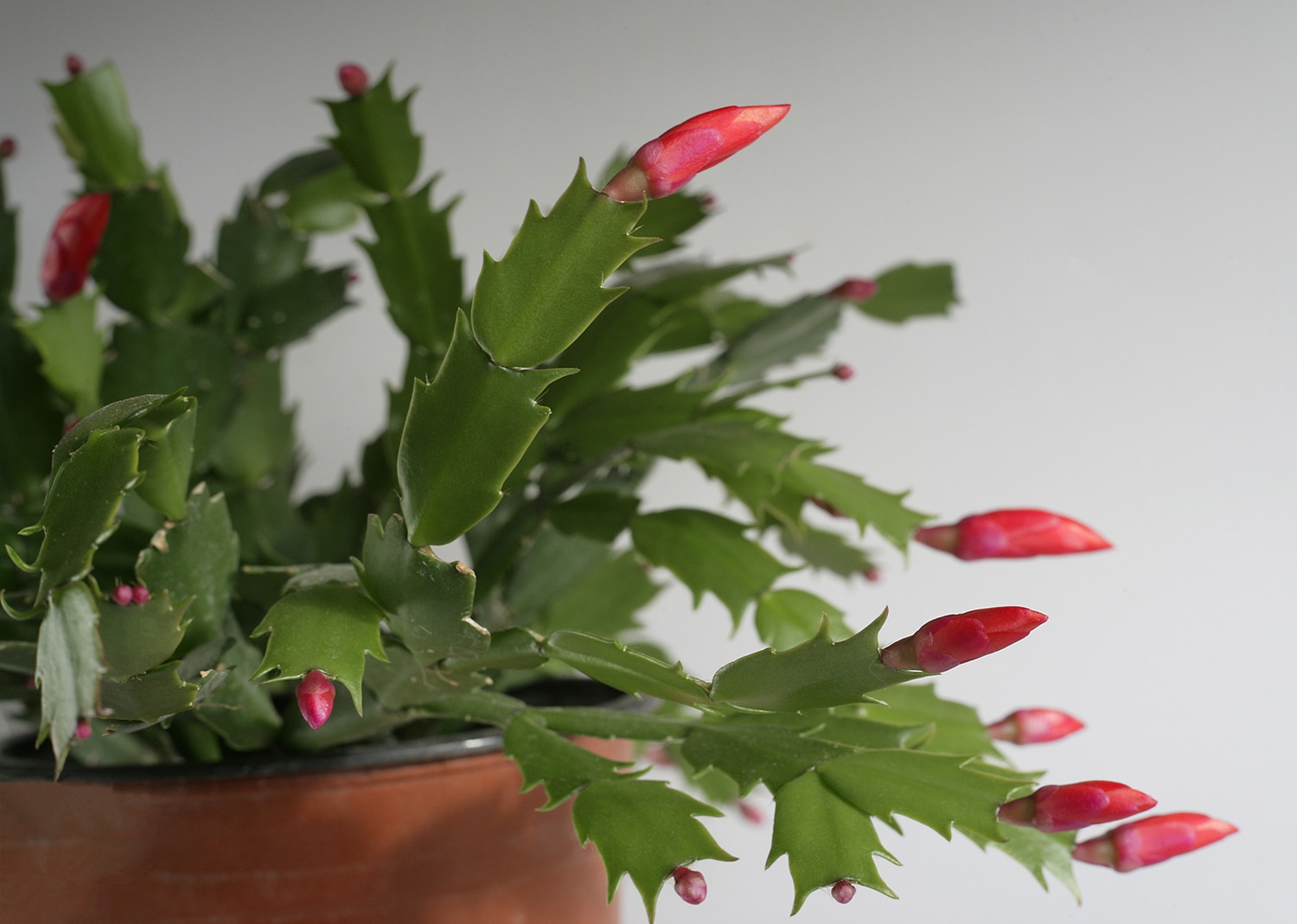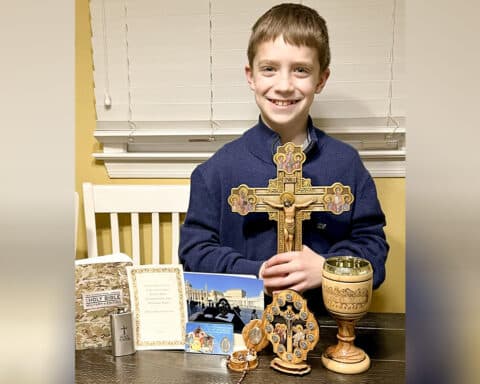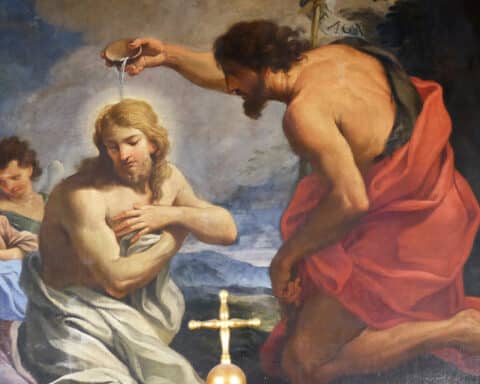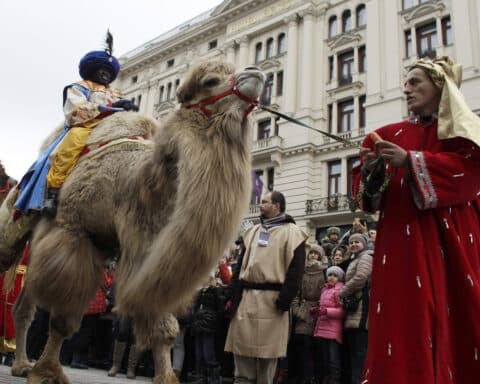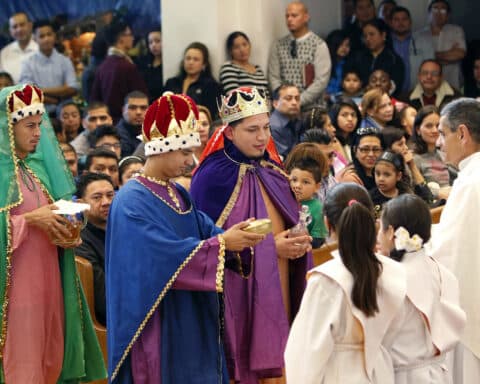Years ago, someone gave my family a Christmas cactus. It looks vaguely alien, with flat, dark green spiky leaves reminiscent of claws, the branches arched as if predatory insects. It sits on a window sill, drinking in the Midwest sunshine 11 months of the year. Then suddenly in Advent, it blooms, often just before the feast for which it is named.
Its dark leaves sprout rich red blossoms, each year more luxuriously, as if all its stores of sunlight spontaneously erupt into fragile flames of bloom, soft and papery and thrilling. The Christmas cactus is an appropriate object for meditation as Christmas approaches. The bloom in the dark of December is a reminder of birth and renewal, the God-man being born on a dark earth and ushering in the springtime of salvation. At least for those of us in wintery climates, the sight of red blooms when everything else is gray or snow covered is a sign of hope.
Joy and sorrow
The blood red of the flowers is a reminder as well of nativity and passion. Of childbirth: God being brought into the world with the wail of a baby’s cry. Of the passion to follow: the blood red gash on the Savior’s side confirming he had breathed his last.
There is, after all, even in the joy of Christmas celebrations, a foreknowledge that this babe upon whom we dote will be dead on the cross by Good Friday. The mother portrayed on the Christmas card holding her baby in her arms in December will soon be holding his lifeless body as memorialized in the statue of the Pieta.
This is one of the paradoxes of life. We feel such joy at the sight of a couple on their wedding day, vibrant and youthful and flushed with the excitement of being at the center of all the excitement. Yet we also know full well what waits. The young couple at that moment is thrilled by the “for better” and “in health,” while we know what “the worse” and “in sickness” can entail. So also with the joy of seeing a baby.
To this day, just seeing an infant in church makes me smile because of all the memories of my children being carried into church (and then carried out into the gathering area when they felt too great a need to participate). Yet we who have raised our children wholly or partly toward adulthood know also the pain we cannot protect them from: betrayal of friendships, love spurned, sin and sorrow.
The red of the seasons
And it is all wrapped up together: the Christmas red and the Passion’s red. Life and joy and pain and death — the thorny beauty of the Christmas cactus. I know not everyone is a lover of icons, but I am drawn to their golden luster and their dispassionate remove. There are icons that seem to speak great truths in a whisper.
One of my favorites is the one that commemorates the birth, with Mary in the cave. Yet the cave is at the base of Golgotha, the hill where Jesus breathed his last.
The liturgical year asks that we reside in this tension: the joy and the sorrow, the birth and the death. It is the tension we cannot escape. As a comedian said recently, our birth rate keeps falling but our mortality rate remains at 100 percent.
And yet that is not the whole story. What makes it all so remarkable, what outrages the materialist and confounds the skeptic is that we have the Resurrection. The comedian’s joke falls flat, because that infant in the manger, that corpse lying across the lap of his grieving mother, rises. Is risen. Will return for us.
Which brings us to the one last symbol of that Christmas cactus. The fiery bloom is the tongue of fire on Pentecost. Our lasting gift from God, our Christmas present, is the Church herself.

